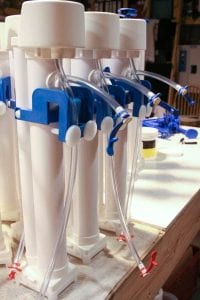
Agriculture
December 27, 2023
AquaFilter Family
Read SolutionImplemented by
Aquabox, UK
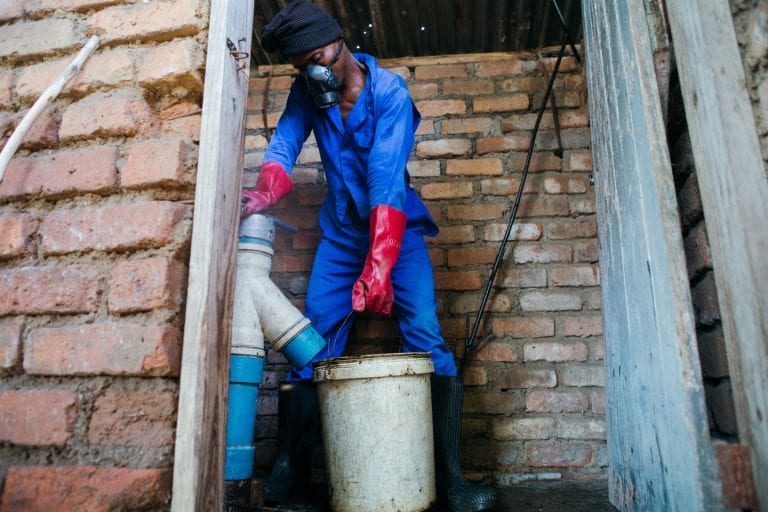
Updated on January 8, 2024
·Created on August 19, 2019
The Gulper is a manually operated pump to empty contents from pit latrines that can be constructed using locally available materials.
The Gulper is a manually operated pump to empty contents from pit latrines. A standard Gulper will reach 1m-1.5m into the pit and an extendable Gulper will reach up to 2m into the pit. The Gulper can pump semi-solid sludge, be constructed using locally available materials, be paid off through fees charged by emptiers for their services, and work in confined spaces. The design is open source, and has been trialled in many countries.
Exact distributions to date are unknown, but the Gulper has been used in a number of countries around the world including Uganda, Cambodia, Tanzania, and Malawi.
Target SDGs
SDG 6: Clean Water and Sanitation
Market Suggested Retail Price
$160.00
Target Users (Target Impact Group)
Household, Community
Distributors / Implementing Organizations
The Gulper can be manufactured globally using locally available materials, and has been implemented by a number of organizations including Engineers Without Borders, Water for People, SEB Engineering, Programme Solidarite Eau, Irish Aid, and Water Aid.
Competitive Landscape
Direct competitors include The Vacutug.
Regions
Worldwide
Manufacturing/Building Method
Product can be manufactured using locally available materials.
Intellectural Property Type
Open-source
User Provision Model
The Gulper can be manufactured by local entrepreneurs using available materials or can be distributed by humanitarian organizations.
Distributions to Date Status
Exact distributions to date are unknown, but the Gulper has been used in a number of countries around the world including Uganda, Cambodia, Tanzania, and Malawi.
Emptying speed (L/min)
30 L/min
Accessories needed
Container for waste storage, water to mix if the sludge is too thick, and the emptier needs full PPE clothing protection
Transport mechanism
Only emptying
Transport speed (km/hr)
Only emptying
Storage volume of transportation (L)
Only emptying
Design Specifications
There are three main components of the Gulper, the rising pipe, the plunger, and the bottom valve. The rising pipe is about 2m in length (can be increased to allow for further pit reach). It is constructed from 4 inch plastic drainage pipe (the thickest available) and has a 45° T-junction allowing sludge to be directed out (into a barrel). Footrests are attached using a clamp and a collar halfway down the pipe. The plunger runs up and down the inside of the rising pipe. At the base is a one way valve which works with the bottom valve to allow sludge to flow up in to the rising pipe. Clamped to the top of the rising pipe is a cap with a rubber grommet attached by a cap (stopping sludge from squeezing out as the plunger is raised). The bottom valve (attached by a collar) includes a cage to stop debris from entering the pipe and causing a blockage.
Technical Support
Users are expected to maintain the product on their own.
Replacement Components
None
Lifecycle
Unknown
Manufacturer Specified Performance Parameters
General performance targets include production locally, can work in confined spaces, lower initial and operation and maintenance costs than other emptying technologies, and effective pumping of semi-solid sludge.
Vetted Performance Status
In the initial pilot by WaterAid in Tanzania only two of the four community-based organizations (CBOs) continued using the Gulper at the end, and lessons learned included adjustments to the formerly solid waste management business models to adapt them to fecal sludge management, and the importance of leadership and decision making in the selection of CBOs. A willingness-to-pay survey conducted in Tanzania found 96% indicated willingness-to-pay of at least TSH 5000 (4.30 USD), and 57% of respondents willing to pay at least TSH 20,000 (17 USD). A modified pedal Gulper in Malawi trailed has a flow rate of 0.00058 m3/s and if the trash content was low, a latrine with a volume of 1-4m3 could be emptied within 1-2 hours. However the success rate was ~17% (5 out 30 sampled lined pit latrines were successfully emptied).
Safety
The operator should not come into contact with the fecal sludge, and must dispose of it according to regulations. Personal protective equipment should at least include a protective suit, face mask, waterproof boots, gloves, and safety googles for the operator. Avoid sparks, such as lighting a cigarette, near the pit.
Complementary Technical Systems
A barrel or other storage item is needed for pumped fecal sludge, and personal protective equipment is needed for the user.
Academic Research and References
Godfrey, A., Mtitu, F., 2015, Pit emptying business model: lessons from Dar es Salaam, Tanzania. 38th Water and Engineering Develop Centre (WEDC) International Conference.
Jenkins, M.W., et al., 2015, Pit Latrine Emptying Behavior and Demand for Sanitation Services in Dar es Salaam, Tanzania. International Journal of Environmental Research and Public Health 12(3), pp. 2588-2611.
Chipeta, W.C., et al., 2017, Designing local solutions for emptying pit latrines in low-income urban settlements (Malawi). Physics and Chemistry of the Earth, 100, pp. 336-342.
Radford, J.T., et al., 2015, Latrine desludging pump development using a simple test for simulant strength: A case study from Uganda. Journal of Water, Sanitation and Hygiene for Development, 5(4), pp. 620-624.
Still, D., Foxon, K., 2012, Tackling the challenges of full pit latrines. Water Research Commission. Vol. 1.
Thye, Y.P., et al., 2011, A critical review of technologies for pit latrine emptying in developing countries. Critical Reviews in Environmental Science and Technology, 41(20), pp. 1793-1819.
Rogers, T.W., et al., 2014, Power earth auger modification for waste extraction from pit latrines. Journal of Water, Sanitation and Hygiene for Development, 4(1), pp. 72-80.
WaterAid, Irish Aid & Tanzania Country Programme, 2010, Pit Emptying Service Using Gulper Technology.
Compliance with regulations
Regulations are context-specific and potential implementers should explore relevant laws, standards, and practices
Evaluation methods
The product is evaluated for willingness-to-pay, sustainability, and flow rates.
Other Information

Agriculture
December 27, 2023
Implemented by
Aquabox, UK
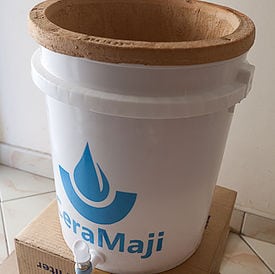
Agriculture
January 11, 2024
Implemented by
Kenya Ceramic Project (KCP)

Agriculture
January 19, 2024
Implemented by
Clean Team Ghana
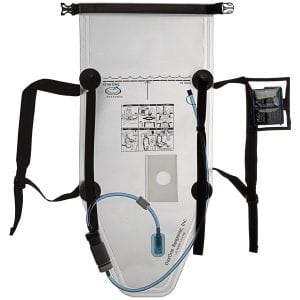
Agriculture
January 8, 2024
Implemented by
DayOne Response
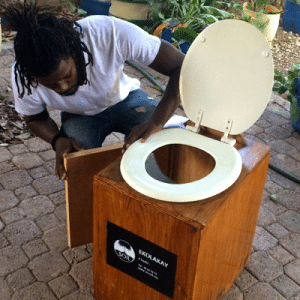
Agriculture
December 20, 2023
Implemented by
SOIL Haiti
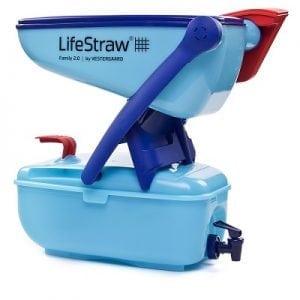
Agriculture
December 29, 2023
Implemented by
LifeStraw
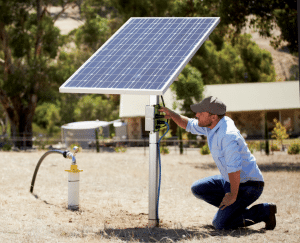
Agriculture
December 27, 2023
Implemented by
Mono Pumps
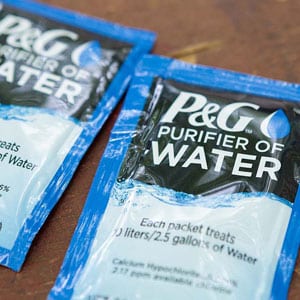
Agriculture
October 14, 2023
Implemented by
P&G
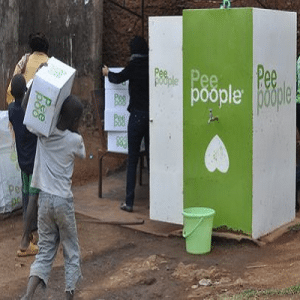
Agriculture
August 17, 2024
Implemented by
Peepoople Kenya
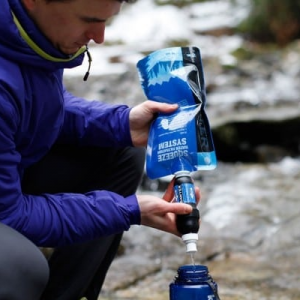
Agriculture
December 29, 2023
Implemented by
Sawyer
Have thoughts on how we can improve?
Give Us Feedback